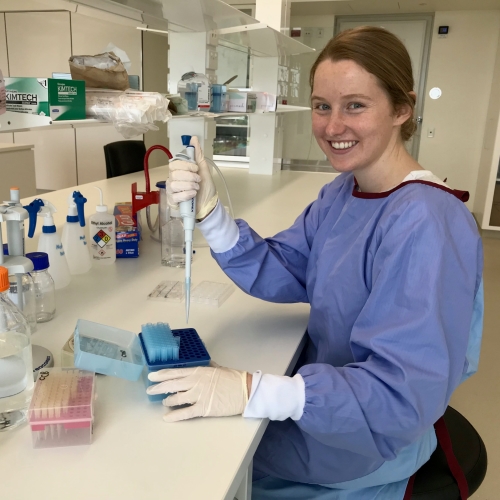18 February 2021
 Researchers at UniSA are developing a technique to make it easier to detect and target pancreatic cancer cells and minimise treatment side effects in patients.
Researchers at UniSA are developing a technique to make it easier to detect and target pancreatic cancer cells and minimise treatment side effects in patients.
Pancreatic cancer has one of the lowest survival rates of all cancers, with the Australian Institute of Health and Welfare indicating only 10.7% of patients live five years post diagnosis.
Currently available treatments for pancreatic cancer, such as surgery, radiotherapy and chemotherapy, are ineffective in most patients as the disease is often identified in its later stages and pancreatic cancer cells are both evasive and resilient.
In response to this challenge, researchers at UniSA are developing a technique that could not only make it easier to detect and target pancreatic cancer cells but may also help minimise the impact that treatment has on healthy tissue.
PhD candidate Ashleigh Hull and Professor in Medical Radiation Eva Bezak are researching a cancer cell receptor called the mucin 1 (MUC1-CE), which is commonly found in pancreatic cancer cells, but largely absent from healthy pancreas tissue, meaning it may serve as a “biological beacon” for targeted treatment.
“Our research looks at developing a new treatment for pancreatic cancer which provides more direct damage to cancerous cells,” says Hull.
“To do this, we target cellular receptors that are common in the cancer cells but uncommon in the healthy cells, and in our study, we found that MUC1-CE is overexpressed on pancreatic cancer tissues, but it is minimally expressed on normal pancreatic tissue.”
“We also found the expression of MUC1-CE was texturally different between pancreatic cancer tissues and healthy tissues – in pancreatic cancer tissues, MUC1-CE expression was significantly higher and more uniform which could lead to a more definite and earlier diagnosis and treatment targeting.”
Hull and Professor Bezak believe the features of MUC1-CE make it a potentially effective receptor for a process known as targeted alpha therapy, which delivers a lethal dose of radiation straight to the cancerous cells through the use of a substance called a radioimmunoconjugate.
“A radioimmunoconjugate is made by attaching a radioactive isotope to an immune substance, such as an antibody, that can bind to cancer cells, meaning it can target those cells only with minimal harm to healthy cells,” says Prof Bezak.
“Our research findings indicate MUC1-CE is a feasible target for targeted alpha therapy of pancreatic cancer, with an expression profile which favours targeting of cancerous cells.
“We are now working on the second phase of the project – developing radioimmunoconjugates which specifically target the MUC1-CE receptor on pancreatic cancer tissues and hope to test these conjugates in preclinical models soon.”
………………………………………………………………………………………………………………………
Media: Dan Lander | mobile: 0408 882 809 | email: dan.lander@unisa.edu.au




